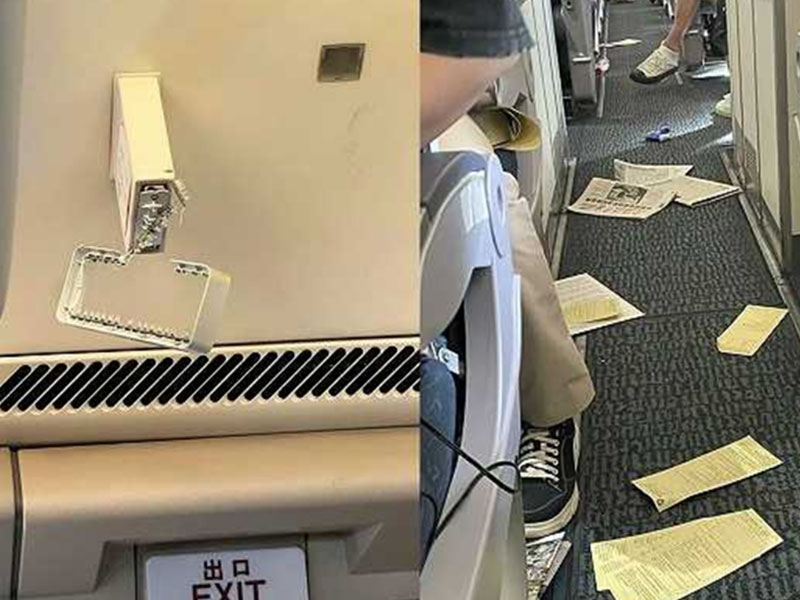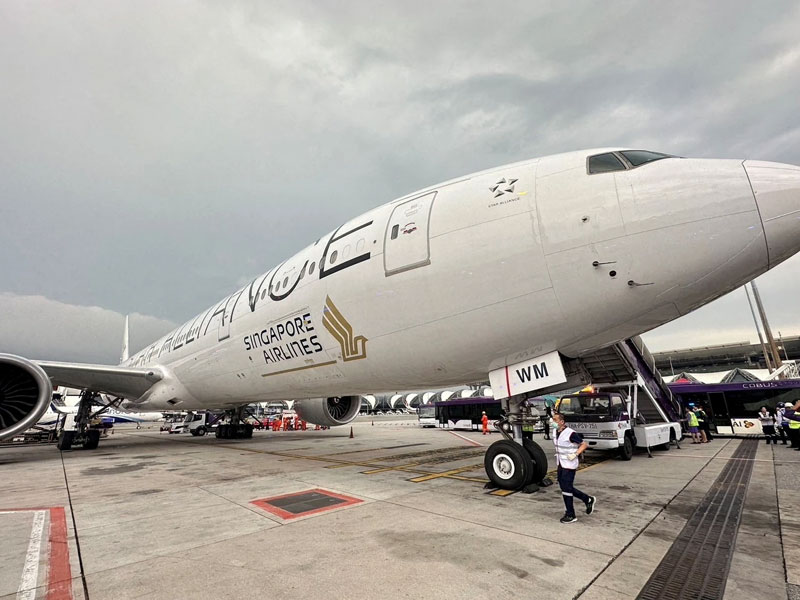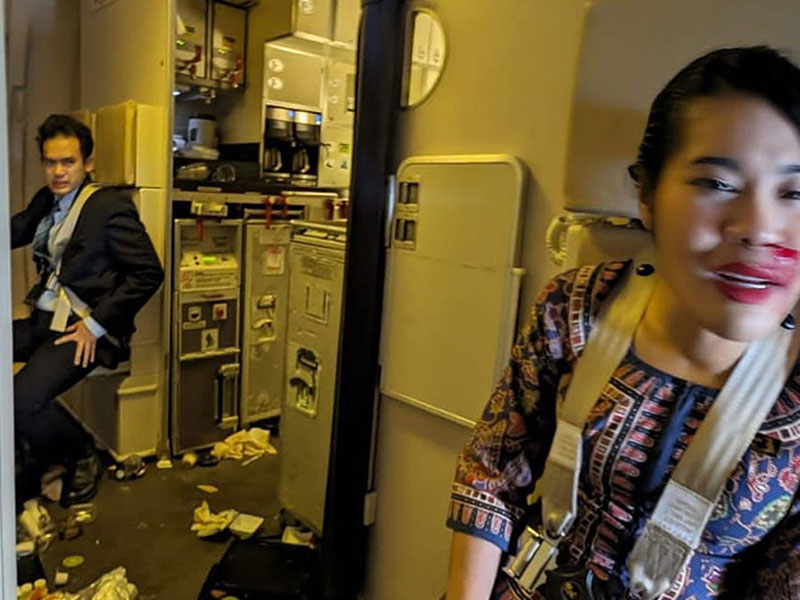Air turbulence on the plane recent Singapore Airlines is making many people worried. Grasp the handling principles below.
-
What are common areas of Air turbulence on airplanes?
The term “turbulence zone” is not a standard technical term in the aviation industry. However, based on context, a “turbulence zone” can be understood as an area or area of air in an aviation space that is unstable, abnormal, or dangerous.
In aviation, there can be areas of Air turbulence on airplanes due to a variety of reasons, including:
Bad weather: Turbulence zones often form during unstable weather conditions, including storms, strong winds, dense fog, or other unpredictable weather conditions.

Unforeseen aircraft behavior: In some cases, the aircraft may encounter technical problems or sudden changes during flight, leading to instability or anxiety.
Security factors: Air turbulence zones can also be related to security issues, including the detection of suspicious objects or dangerous behavior on aircraft.
Unexpected events: There may be unexpected events or special situations occurring on aircraft or at airports, leading to turbulence in the aviation space.
In all cases, air turbulence zones need to be handled carefully and professionally to ensure the safety and security of all parties involved.
-
Effects of air turbulence on flight
Air turbulence, also known as turbulence, can have a significant effect on the comfort and safety of passengers and crew on an aircraft. Here are some effects of air turbulence:
Potential loss of safety: Turbulence can cause the aircraft to move irregularly and suddenly, causing confusion and discomfort for passengers. In case of strong turbulence, it can also cause injuries to passengers and staff.
Causes anxiety and panic: Passengers’ feelings when the plane experiences turbulence can cause anxiety and panic, especially for those who are afraid of flying or have a medical condition that cannot tolerate sudden fluctuations.

Impact on in-flight services: During air turbulence on the aircraft, service provisions such as food and beverage service may be suspended to ensure the safety of staff and passengers.
Causes delay: Turbulence can increase the aircraft’s travel time because the crew must adjust the flight path or reduce speed to avoid turbulence.
Psychological effects: Although part of the normal flight process, turbulence can create a feeling of instability and insecurity, affecting the psychology and spirit of passengers.
In all cases, cabin crew will usually do their best to minimize the effects of turbulence on passengers, and they will provide information and assistance where necessary to help passengers overcome the conditions. this uncomfortable situation.
-
Types of Air turbulence on airplanes
There are three main types of aircraft turbulence, classified based on their origin and how they affect the aircraft:
Mechanical Turbulence: This type of turbulence often occurs due to the impact of physical factors on the ground or the surface of the ocean. These factors may include:
Mountain Wave Turbulence: Occurs when wind flows over mountain ranges, creating turbulence waves at different altitudes.
Jet Stream Turbulence: Occurs when an aircraft comes into contact with strong, steady wind basins in the atmosphere, often at high altitudes.

Convective Turbulence: This type of turbulence arises due to the instability of air during the heating process from the ground surface. Types of resonance disturbances include:
Cloud Turbulence: Occurs when aircraft fly through highly developed clouds or concentrated cumulus clouds.
Fog Turbulence: Occurs when aircraft fly through areas of dense fog, causing irregular air fluctuations.
Clear Air Turbulence (CAT): This type of turbulence is not present on radar and is often difficult to predict. It can arise at any altitude and is not associated with any specific weather conditions. Artificial air turbulence is often the main cause of discomfort for passengers on airplanes.
-
Airplane crashes due to air turbulence around the world
Airplane accidents due to air turbulence are one of the causes of aviation incidents. Below are some prominent aircraft turbulence accidents:
Crash of United Airlines Flight 826 (1960): On June 24, 1960, United Airlines Flight 826 from San Francisco to Portland encountered turbulence over the Rocky Mountains. The plane lost control and crashed into Slattum Mountain, causing the death of all 39 passengers and crew on board.
Crash of Eastern Air Lines Flight 66 (1975): On June 24, 1975, Eastern Air Lines Flight 66 from New Orleans to New York encountered strong turbulence while flying over the Blue Ridge Mountains in Virginia. The plane lost control and crashed into Buffalo Mountain, killing 113 people on board.

Aeroflot Flight 6502 Crash (1994): On October 30, 1994, Aeroflot Flight 6502 from Krasnoyarsk to Novosibirsk in Russia encountered turbulence while flying over Siberia. The plane lost control and crashed into the Ob River, killing all 75 people on board.
These accidents are examples of how strong air fluctuations can be dangerous for aircraft and lead to serious incidents. However, it should be noted that aviation accidents are influenced by many factors and are not always caused solely by turbulence.
-
Outstanding accidents and incidents of Singapore Airlines
The latest incident attracting public attention is a Singapore Airlines plane having to make an emergency landing at Suvarnabhumi Airport (Thailand) due to air turbulence on board. The incident left one person dead and 30 injured.
Singapore Airlines (SIA) is known as one of the safest and top-quality airlines in the world.
However, like any other airline, SIA has also encountered several accidents and incidents. Here are some notable cases:
Flight SQ006 (2000) crash: On October 31, 2000, Singapore Airlines flight SQ006, a flight from Singapore to Los Angeles, crashed while taking off from Can Tho International Airport in Taiwan. The Boeing 747-400 left the runway while maneuvering and collided with airport structures, then caught fire. This accident caused 83 deaths and dozens of injuries.

Unsafe takeoff of flight SQ368 (2016): On 27 June 2016, Singapore Airlines flight SQ368, a flight from Singapore to Milan, had to return to Changi Airport after a fire was detected. engine while the plane is in the air.
The plane landed safely but then caught fire. There were no casualties in the incident, but the incident caused a wave of concerns about aviation safety.
In addition, there have also been some other minor incidents such as flight cancellations, technical problems, and problems related to customer service. However, Singapore Airlines is often known for its bravery and discipline in maintaining safety and service quality.
-
When the plane enters the air turbulence area, what should passengers do?
When encountering turbulence on a plane, the most important thing is to stay calm and follow the crew’s instructions. Here are some actions you can take:
Fasten your seat belt: Always fasten your seat belt when requested by the crew. This will keep you safe in case the plane encounters turbulence and emergency measures need to be taken.
Sit in a chair: If you are not sitting in your chair, quickly return and sit down in your chair. In the event of strong air turbulence, failure to maintain a sitting position can cause injury.

Secure personal items: Make sure your items such as drinks, bags, or personal belongings are securely placed or stored in a safe place. Avoid leaving them free on your desk or in your space.
Sit near the emergency exit: If possible, choose a seat near the emergency exit to increase your chances of escaping in an emergency.
Listen to crew instructions: Follow and listen to crew instructions. They will provide specific information and instructions about the situation and safety measures to take.
Remember, Air turbulence on airplanes is usually a normal part of flying, and cabin crew are trained to handle this situation professionally. Staying calm and following instructions will help you get through any situation in the safest way.
Read more: Revealing how to play Senua’s Saga Hellblade 2 for an authentic experience